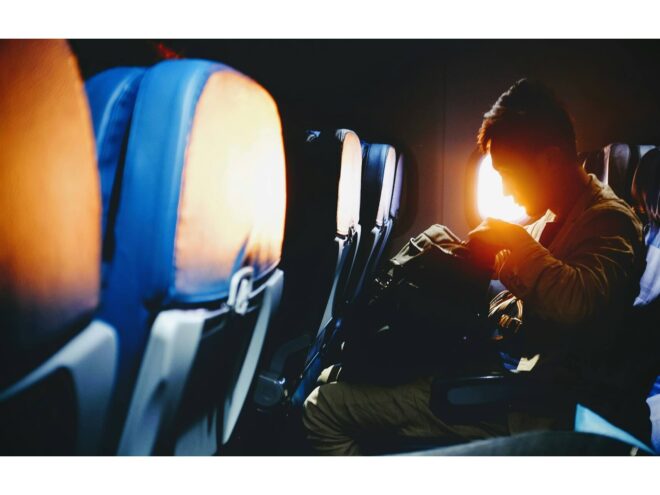Adventure • 10/01/2023
How to Travel Safely: 7 Proven Tips for a Successful Trip

Revivalist is a reader-supported endeavor and our posts may contain affiliate links. When you buy through links on our site, we may earn an affiliate commission.
Every traveler knows the thrill of stepping into a new city, the excitement of exploring unfamiliar terrains and the stories waiting to unfold. But amidst these adventures, knowing how to travel safely often takes a backseat, turning dream vacations into challenging situations.
Prioritizing safety doesn’t mean compromising on the fun — it means ensuring every memory made is a cherished one. Here are seven essential tips to travel safely, letting the adventures continue without a hitch.
1. Know Your Destination
Being attuned to local customs, laws and potential safety concerns of your destination will help you have fewer problems during travel.
For instance, in some countries, simple gestures or attire might be considered disrespectful or even illegal.
Before traveling, regularly check local news websites or apps for any recent incidents or advisories. Search for credible sites for updated travel warnings and alerts.
You can also read books or online resources offering insights into local customs and behaviors to adopt or avoid.
2. Keep a Travel Diary
While most associate travel diaries with memories and experiences, its role in ensuring safety is often overlooked. A well-maintained travel diary acts as a record of your whereabouts and plans, especially if you are traveling to an unfamiliar place for the first time or traveling alone.
Travelers who kept detailed records, including accommodation addresses and contacts, found it easier to navigate emergencies, from lost passports to medical situations.
In your diary, always have local emergency numbers, including the nearest embassy or consulate, written down. Note down the name, address and contact number of your hotel or place of stay.
You can also outline your plans for the day, including places you intend to visit and their opening and closing times. If you’ve pre-booked any transportation, jot down the details, including departure and arrival times.
3. Budget Wisely
Financial mishaps while traveling can quickly turn a dream vacation into a nightmare. According to a survey, one out of five American travelers have gone into debt due to travel expenses.
Spontaneous adventures might sound appealing, but with a clear financial plan, you can stay within your funds in unfamiliar territory.
Start by setting a daily budget, factoring in accommodation, food, transportation and activities. Always keep an emergency fund, preferably in a mix of cash and digital formats.
You should also monitor your spending and be wary of tourist traps that might overcharge. Using apps or tools to track expenses can be beneficial.
4. Choose the Right Luggage
Selecting the right luggage goes beyond mere aesthetics or brand loyalty. Travelers who opt for high-quality, durable luggage experience fewer travel hiccups, such as lost items or damaged goods.
When considering luggage, prioritize those with TSA-approved locks: These deter theft and prevent unnecessary breakages when security checks your bags.
Hard-shell suitcases are also recommended as they offer better protection against impacts, reducing the risk of damaged items.
Consider getting 360-degree spinner wheels. This feature ensures you can swiftly move through crowded spaces, reducing the chances of theft or misplacement.
Suitcases with multiple compartments also aid in quicker checks at security and reduce the likelihood of leaving items behind in hotel rooms.
5. Stay Connected
Before you leave, give a detailed copy of your travel plans to a trusted individual. This should include hotel details, flight numbers and any tours or excursions you’ve booked.
Set a specific time each day to touch base. It could be a quick message or a brief call. If you miss this check-in, your contact will know to take action.
Always have the local emergency numbers saved in your phone and shared with your contact. It ensures that help is just a call away for you and your loved ones back home.
6. Prioritize Health
Traveling exposes us to new environments, cuisines and experiences. However, it also brings us into contact with unfamiliar health risks. A total of 79% of travelers experience health problems during their trips.
Pack a comprehensive first-aid kit to mitigate these risks and ensure you know how to travel safely. This should include antiseptics, band-aids, pain relievers and any prescription medications you might need. It’s also wise to include treatments for common travel ailments like diarrhea or motion sickness.
Depending on your destination, certain vaccinations might be recommended or even required. The World Health Organization (WHO) provides updated vaccination guidelines for travelers, ensuring you’re protected against regional diseases.
Lastly, it is important to know local health resources. Before traveling, research nearby hospitals or clinics in your destination. Locate the nearest emergency room and 24-hour clinics and pharmacies.
7. Trust Your Instincts
While planning and preparation play a significant role in safe travel, listening to your inner voice is equally crucial.
Familiarize yourself with common scams or dangers in your destination. Being aware can help you recognize when something doesn’t seem right.
Especially in unfamiliar environments, keep your senses sharp. Avoid distractions, like excessive alcohol consumption, which might cloud your judgment.
If a situation or offer seems too good to be true or raises red flags, it’s okay to decline and remove yourself. Your safety should always come first.
More Travel Safety Tips
Here are some additional safety tips to keep in mind while you travel:
- If hiking, stay on designated trails.
- Choose guided tours when possible if you’re traveling solo to avoid getting lost.
- Use cross-body purses and bags that fasten shut to avoid theft.
- Ask for directions when lost. Don’t wander aimlessly.
- Wear practical shoes and clothes while sightseeing.
- Utilize safes in hotel rooms.
- Read reviews online for excursions to ensure they’re safe and not scams.
- Pay extra attention to traffic signs, both when driving or crossing the street in different countries.
- If you don’t have access to WiFi or cellular data, download or print everything you need in advance, such as directions, tickets and confirmation emails.
Charting Safe Journeys
Traveling enriches the soul, broadens horizons and introduces us to a mosaic of cultures and experiences. Yet, the essence of any journey lies not just in the destinations explored but in the safety measures upheld.
Integrating the tips on how to travel safely can help fortify your adventures against unforeseen challenges. With preparation and vigilance in your toolkit, you’re set to create thrilling and secure memories.
Ready your luggage, strategize your itinerary and set forth on your next escapade, fortified with knowledge and assurance.
Subscribe to Our Weekly Newsletter
We would love to connect deeper with you!


